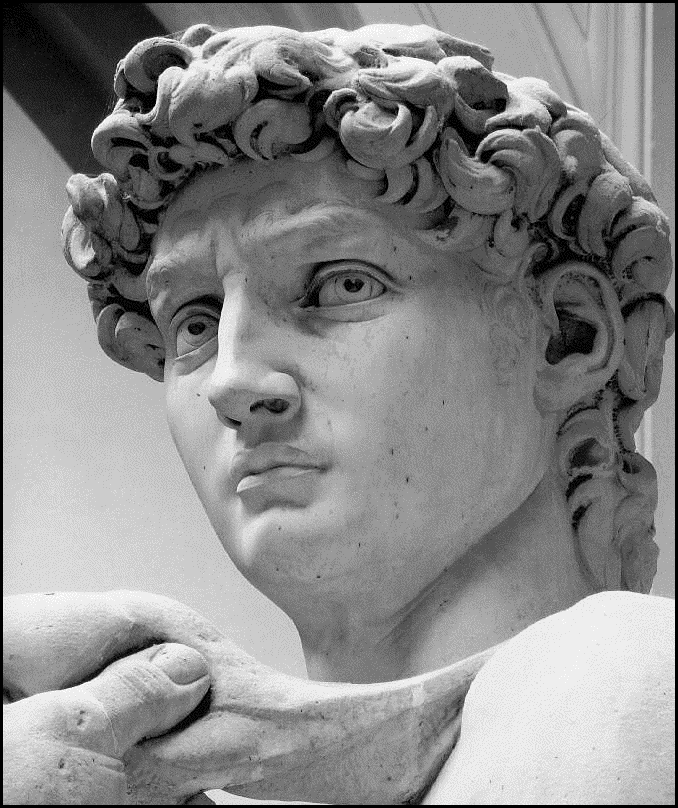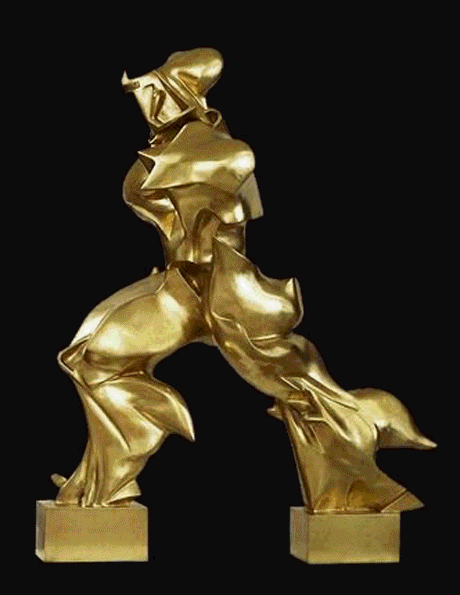
A Dozen HitsEvery month, we get updates
on our readers' favorites
from our server:
those poems, readings, or
book reviews that continue
to receive the most hits
from readers.
Here are the
Top Twelve.
Michelangelo and the
Pope's Ceiling
<Ross King
John Lee, Reader
(Books on Tape)

Ross King not only writes knowingly about the painting of the Sistine Chapel and about classical and contemporary (14th - 16th Century) art and artists --- he offers exquisite details on the art of frescoing, information on how to cast bronze statues, and insights into the continual and often alarming (to Michelangelo) bickering between popes, papal states, independent Italian republics, French armies, Spanish soldiers-of-fortune, and Swiss freebooters. King is no sourpuss, and the story is often quite merry. He lets us in on the rich eccentricities of the characters of the times --- not only Michelangelo Buonarroti, but Raphael Sanzio, Leonardo da Vinci, and most fun of all, Pope Julius, "Il Terrible." Indeed, Julius II reminds us of a lusty character out of Rabelais --- a fearsome hunter, a noisy warrior, an intemperate fighter, an opinionated crackpot. He was forever hitting on people when he was angry (or ecstatically happy).
How strange it is in retrospect that this noisy, syphilis-ridden rowdy selected the young and inexperienced Michelangelo from all other possible artists to paint the frescos in the Sistine Chapel --- that holy of holies --- and continued to support him even when Michelangelo was being his most obstreperous.
The great figures --- over 300 in number --- that ended up on the 12,000-
square-foot vault represent a radical departure in 15th-16th Century artistic tradition. They've been characterized as "twisted, muscle-bound supermen," placed by the artist in some of the most agonized postures possible. Too, there is the astonishing variety. The ceiling of the Sistine Chapel has been called a "portfolio" for succeeding artists in succeeding generations. There are not only five Biblical prophets and seven sibyls (seers drawn from classical literature), there are angels and dwarfs and divines and the common folk: the latter being the supposed family of Jesus.
There are the classic Old Testament scenes --- the parting of light from dark, the giving of life, the flood. Then there is the eating of the forbidden fruit where, as King suggests, both Eve and Adam seem to be helping themselves, spreading the guilt equally among the two of them.
Frogs
Inside Their
Remarkable World
Ellin Beltz
(Firefly)

You're depressed so you are taking Prozac, or Paxil, Zoloft. I'd be the last to depress you even further, but turns out that these drugs are appearing in wastewater, and in turn, are causing impaired thyroid function in frogs. "Frogspawn exposed to low levels of Prozac was retarded in development and took longer than usual to transform to tadpoles," Beltz reports.Dave Barry says it is hard to get worked up about the disappearance of creatures that carry their spawn about in their mouths, or those who --- after shedding their skin --- promptly eat it, or those that (as one writer said) sound like a room full of "chuckling old men."
And they look so geeky. California's red-legged frog looks like Peter Lorre with big fat (red!) lips, and the Argentine horned frog looks like a Dempsey Dumpster dressed up with stripes. The pink-bellied harlequin frog just got in from Mars, and the marine toad is not unlike those old men that play poker in Las Vegas, never smiling, squatting there with their poker chips.
GrassHe must have been hurt when the landless clustered in cities
And later when cities gradually muscled outward
With brick and blacktop into glade and meadow.
What a shock for him when he found,
At the edge of the woods, his favorite trail
Blocked by the parking lot of another church
Built in his honor, another mosque or synagogue.It shouldn't be any surprise that his visits
Ceased long ago, that now when he gives a report
To the gods of other realms met in assembly,
He lists our planet as one of the few
Failed experiments in his dominions.Your mistake, says one of the other delegates,
Was supposing a god could do his job
Responsibly in a five-day work week.
Your mistake, says another, was thinking yourself
So needed at work that you skimped on the pleasure
Of witnessing how the grass was getting on.The Volcano
Adventure Guide
Rosaly Lopes
(Cambridge University)Besides blasting off the sides of whole mountains, volcanoes have been cited by the EPA for smoking too much and for emitting hydrogen sulfide. Which stinks. Bad.Volcanoes have thus been prohibited in the United States east of Mount Rainier and south of Lassen Peak. Mexico, naturally (being Mexico) regularly violates these restrictions with unlicensed eruptions, pyroclastic flows, and smoking calderas. Mexico also collects volcanoes --- sixty-seven in all --- with names impossible to remember, much less pronounce or write: Iztacchíuatl, Chichinautzin, Cuexcomate, and Popocatépetl. Some people insist on calling this last "Popo," but, because of its meaning in Spanish, it is best not to bring it up in polite company.
For some strange reason, volcanology is considered to be an exciting career choice, but several of this number have died in the line of duty, including three at Unzen in Japan in 1991 and two at Galeras in Columbia in 1993. There are probably 1500 volcanoes in the world, including current blowhards, along with those which are extinct, at rest, on vacation or just playing dead.
The Slave Ship
A Human History
Marcus Rediker
(Viking)The main supporters of slavery were quick to use the profit-&-loss ledger as their defense. In the abolition fights in Parliament and the United States Congress during the last of the 18th Century, the argument was that "the suppression of it will destroy a great nursery for seamen, and annihilate a very comfortable source of commercial profit."Part of the bottom line argument was that it would be foolish for the slavers to permit their charges to die, for each body transported live further augmented profit. Rediker quotes from the correspondence of the day to show that cash-flow was always at the top of the minds of the investors back in Bristol, Liverpool, Providence, or Boston: "Liverpool merchant David Tuohy wrote to Captain Henry Moore of the Blayds in 1782: 'you have a large Capital under you ... it behooves you to be very circumspect in all your proceedings, & very attentive to the minutest part of yr Conduct.'"
Some slave ships and their cargoes were worth as much as £10,000 to £12,000, which would be roughly $1.6 to $2 million in today's currency. The captain's power depended first and foremost on a connection to capitalists.
Rats:Observations on the History and
Habitat of the City's Most
Unwanted Inhabitants
<Robert Sullivan
(Bloomsbury)Rats spend most of their time eating, sleeping, and making babies. One pair can produce 15,000 descendants. They usually stay within sixty-five feet of their nests. When a colony is poisoned, the pregnancy rate of any nearby female rat doubles.If you want to get the skinny on rats, talk to exterminators. Because of the reality of their jobs (you cannot exterminate all the rats everywhere, maybe not anywhere) they now call themselves "vermologists" or "rodent controllers" or the like.
They will tell you, as one told Sullivan, that to seed a trap you should use Hershey Bars, nuts, anchovies, shrimp and beer. I almost wrote "beet." Hold the beets. According to experts, rats don't care for beets, peaches, raw celery, cooked cauliflower, or radishes (with tops). They adore scrambled eggs. With cheese. Don't hold the fries, though. Nor the lettuce, mayonnaise, tomatoes, pickles, and ketchup. We rats eat them up. With relish.
50 Photographers
You Should Know
Peter Stephan
John Gabriel,
Text Translator
(Prestel)This is a work of love, and we love it, and would marry editor Peter Stephan if he would have us, if he's free and willing, has the time to take myriad photographs of us in the buff (or in the park). Those who teach photography, if they were wise, would force their students to study each and every one of the 200 or so shots shown here. Our only demurral would have to do with Nan Goldin, Martin Parr, Andreas Gursky and Wolfgang Tillmans, stuffed in there at the very end. In the photographic arts, we're hopelessly stuck in the quicksand of the past, never much cared for color work, never could figure out why others favor it, why whole books are dedicated to it since to our simple taste it gives too damn much and leaves nothing to the imaginationThe editor is not only wise in his choices and layout, he's literate. The introduction, "Rendering the visible to make it visible" is spot on: "According to Lewis Mumford, the time clock, and not the steam engine, was 'the most important machine of the industrial age' ...
"To be in command of time is to have power. Photography is the pleasure of making time come to a stop. The perpetuum mobile of our existence pauses for a brief moment."
No face, even in repose, is totally motionless. A face held motionless on silver gelatin paper radically confounds our perception and triumphs over time and ageing ... The portrait --- apparently a simple matter to manage --- is perhaps the most difficult of all photographic genres.
"The charisma of the model reacts to the charisma of the photographer, and in the most favorable cases the effect has been reciprocal."
The Klondike Quest
A Photographic Essay: 1897 - 1899
Pierre Berton
(Boston Mills Press)So up they went, again and again, doing what came to be called the Chilkoot Lockstep, "an odd rhythmic motion" that, according to Berton, none would ever forget. Nor would they forget another weird experience, the moan:In the years to come one sound would continue to echo in their memories --- the single all-encompassing groan which, as one the White Pass trail, rose from the bowl of the mountains, like the hum of a thousand insects.
Once you made it to the other side, there was another omigod problem. Water. Cold, icy water, in Lakes Lindemann, Bennett, and Tagish. The only way to make it to Dawson was by water, no more mountain climbing.
The stampeders did what few of them imagined they would be doing when they set out on the golden path: they became builders of boats. They cut down trees, clearing a small forest, built boats, sculls, skiffs, hulks, canoes, barges --- anything to get them the 500 miles to Dawson. The Canadian police, as always, kept good records. Every bark was numbered. The final total: 7,124 hand-hewn boats.
And once they got to Dawson ... ah, the strangest of them all. Berton tells of a passiveness that came over many of the gold-seekers, one that eerily echoes the "Chilkoot Lockstep." The stampeders, seeing the thousands who had come before them plodding back and forth like sleepwalkers, became part of an aimless crowd, "curious, listless, dazed, dragging its slow lagging step along the main street."
Of all the bizarre spectacles conjured up by the Klondike phenomena, this is the strangest. These men had clawed their way north in the face of appalling hazards. Most had been on the trail for the best part of a year, overcoming every natural obstacle in order to reach their goal.
But once there, "Thousands did not even trouble to visit the fabled creeks or stake a claim. Others did so perfunctorily ... and did not bother to sink a shovel into their property."
The Worst Hard Time
The Untold Story of Those Who
Survived the Great American Dust Bowl
Timothy Egan
(Houghton Mifflin)It blighted parts of New Mexico, Texas, Oklahoma, Colorado, and over half of Kansas. In 1933, there were multiple dust storms that lasted seventy days. In 1935, it stripped away an estimated 850,000 tons of good topsoil, the same year that it drove 250,000 people from their homes.Cows were found dead, bellies loaded with dust. Wheat, corn, fruit trees, grass died during the eight years of drought. It also killed people: there was so much floating particulate matter in the air that children would develop "dust pneumonia" --- a form of silicosis, and die of suffocation.
Visibilty would drop to zero. One could not see far enough to farm, to go to school, or go to town. Sometimes it was impossible to go next door. One could "drive for days without seeing a single green thing."
A judge in Dalhart, Texas, trying to understand why people were going crazy, drove through the dust bowl and
saw farmhouses without a chicken or cow. He saw children in rags, their parents too frightened of dust pneumonia to send them to school, huddling in shacks shaped into wavy formations on the prairie, almost indistinguishable from the dunes.
A woman was brought to his court. "Her children were hungry, dirty, coughing, dressed in torn, soiled clothes. The house was nearly buried." Having lost her husband to the dust, what finally drove her over the brink wasn't the critters (centipedes and black widows). No, the thing that destroyed her and so many of her neighbors was the enervating, hot, rainless wind that never stopped. "One day, the woman simply snapped. 'Dust is killing me!' the woman shouted."
Art
Over 2,500 Works from
Cave to Contemporary
Foreword by Ross King
(DK) The prejudice in Art is shown by the artists who get more than a eighth or a quarter or a half-a-page. Seurat gets five which is OK by me: anyone who would drive themselves nuts by dividing their paintings into seven-million colored dots deserves some space. My beloved Matisse only merits three pages, with the atypically sad Sadness of the King getting top billing. Picasso rakes in the sweepstakes with eight full pages, four dedicated to Guernica alone. Stupendous Modigliani gets only one, Soutine --- no dead dogs allowed --- a half-a-page.
The prejudice in Art is shown by the artists who get more than a eighth or a quarter or a half-a-page. Seurat gets five which is OK by me: anyone who would drive themselves nuts by dividing their paintings into seven-million colored dots deserves some space. My beloved Matisse only merits three pages, with the atypically sad Sadness of the King getting top billing. Picasso rakes in the sweepstakes with eight full pages, four dedicated to Guernica alone. Stupendous Modigliani gets only one, Soutine --- no dead dogs allowed --- a half-a-page.My other hero, Henri Rousseau --- they call him a primitive --- gets but a page, while that overblown Salvador Dali is awarded three-and-a-half ... including a lobster atop a telephone. The editors assure us that "both hard-shelled objects, lobsters and telephones held powerful sexual associations for Dali." Waiter, hold the Lobster Newberg.
The big bore Robert Rauschenberg gets three pages, Jasper Johns two, and that dunce Andy Warhol two too many, along with his cynical quote "Making money is art, and working is art, and good business is the best art."
A Conversation
With an Old Man
[Excerpts]
Lama Gungtang Konchok Dronme "This ugly face that you see
"This ugly face that you see
Is not a monkey's mask that I wear.
It is just that my mask of youth ---
Mine only on loan for a short while ---
Has now been taken back, and
Only the ugly bones of death remain."This constant wobbling of my head
Is not a sign of my disapproval.
The Lord of Death has struck me with his club
And ever since then my brain is unsteady."This manner of walking that you see,
My eyes cast down at the road,
Is not in order to find
A needle that has been lost.
The jewels of my youth have fallen to earth,
And I walk in a daze,
Barely able to remember my own name."The way I rise on four limbs
Is not a playful imitation of an animal's ways.
My legs will no longer support me,
So I must use both arms and legs to move."
A Funny Thing Happened
On My Way to Old Age
Life Changes After 50
<Stanley C. Baldwin
(IVP)Bless me if I can figure out what to offer Baldwin for his pique. He's stuck with a bad deck of cards: women may forget him after he has popped off; the devil gets on his case nightly; and he can't even expect the extension cords to lie straight or people to get out of his way when he's shopping at the 7-11. His life is turning so sour that the only thing I can suggest is that he consider trading his shop-worn and obviously unserviceable religion in on another --- one that is more gentle, less onerous, less hag-ridden.Quakerism would be a good possibility: an hour or two a week of silent vigil in the meeting-house; enforced kindness (no battling the devil in this one); calling friends and strangers alike "thee" and "thou;" avoiding animal flesh (no struggle between butter and oleomargarine).
Another possibility is Judaism. It utilizes the very same Bible (at least a major part of it) that he is so familiar with. There is an emphasis on ceremony and the one god. Most of all, it is a religion rich with tradition. If he sets his mind to it, he could --- over the next few years --- make an engrossing (not to say therapeutic) study of the Torah, the Mishna and the Kaddish. This would reward him with a vast new field of thought and discipline, if not personal comfort.
He might even consider giving Buddhism a whirl. It's an intellectual religion which could help him rid himself of the ruinous expectations that plague all of us, young and old. It would also give him a solid foundation on which to build for dotage, utilizing the four verifiable truths: Life is a royal pain; pain has but one source; that source is desire; and there is a way beyond that self-destructive desire.
Once he came to see truth of this, Baldwin could begin to free himself from the never-ending treadmill of birth and rebirth, could become part of a more forgiving faith --- one that has, at its terminus, a veritable jackpot: that he would never have to go through suffering, ageing, dying, death again. Moreover, he would never have to deal with tangled extension cords, hungry widows, and --- best of all --- would never ever have to fight Satan again.
For, as the Buddhists have known for the last 2,500 years (but have scarcely discussed --- they don't like to talk bad about other religions), the fallen god that the Christians know as Satan does not lie without, he lives but within the depths of the human heart.